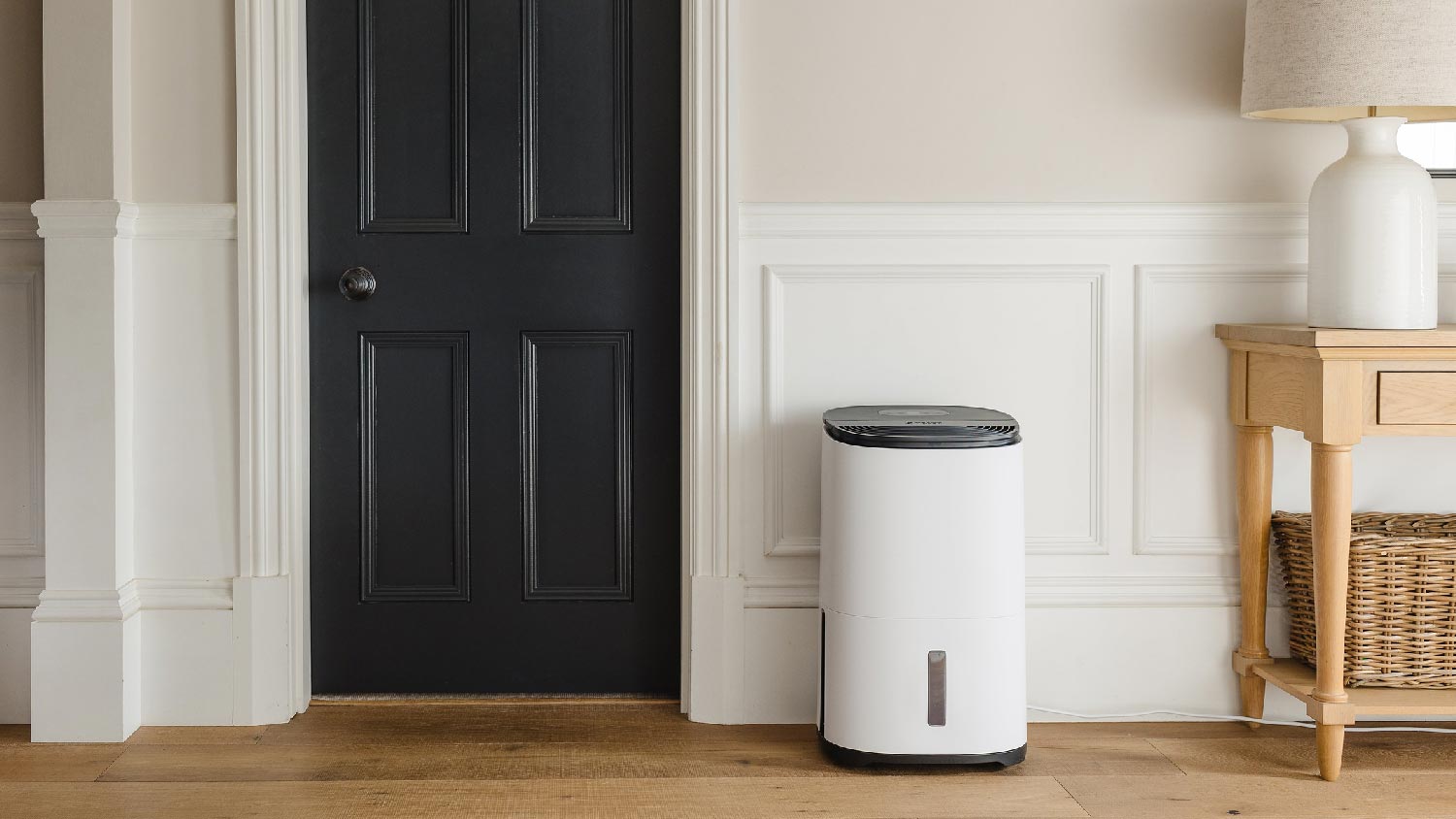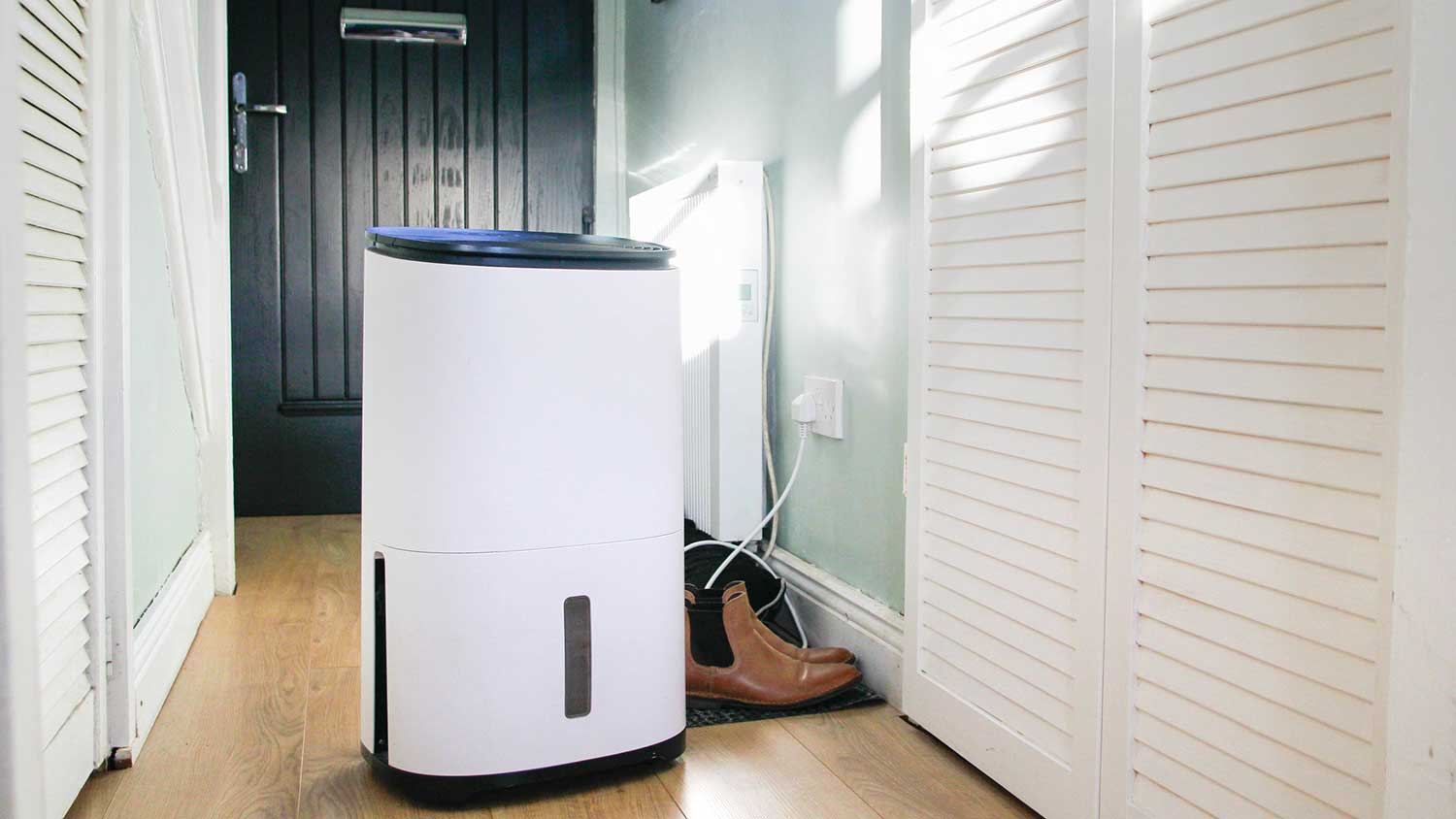Why Is My Dehumidifier Leaking? 5 Causes and Solutions
Pool your knowledge by learning all the reasons your dehumidifier might be leaking


A loose water stopper or a clogged or damaged discharge hose can cause a dehumidifier to leak.
Other causes include an overflowing water tank and placing the unit on an uneven surface.
A dehumidifier should last between 4 and 9 years.
Why is your dehumidifier leaking? Portable dehumidifiers make it easy to control humidity in targeted areas of your home, but if they malfunction, you can end up with water on your floor. Here’s a look at five common reasons why your dehumidifier is leaking and what to do about it. (Note that this article only covers portable dehumidifiers; whole house dehumidifiers will need to be checked by a pro.)
1. Water Stopper Not In Place
The water stopper is usually attached to the dehumidifier and plugs or covers a spout protruding from the appliance. If you’re using a drainage hose, it may be attached to this spout. Over time, the stopper can become loose or degrade and allow water to drip from the machine; fortunately, these parts aren’t expensive to replace.
How to Fix It
Make sure the stopper is firmly attached to the draining spout and there’s nothing preventing it from working correctly.
You may need to replace it if your appliance is older or you use it often.
2. Discharge Hose Not Draining Correctly
On many units, you can choose whether to discharge the water into a holding tank or down a drain. Either way, there should be a drainage hose allowing this. Check to make sure it isn’t cracked or clogged and is secured properly to the dehumidifier.
How to Fix It
Check for kinks in the hose. Straighten it if necessary.
Clear any blockages.
If the hose is damaged, you can replace it for very little money.
Ensure the hose is properly attached to the dehumidifier.
3. Water Tank Overflowing

Another common cause of dehumidifier leaks is an overflowing water tank. There are sensors (often a simple floating mechanism) that measure the amount of water in the tank. These sensors can fail, causing the appliance to think the reservoir is empty.
How to Fix It
Make sure the water tank is correctly installed every time you remove it.
Make sure the switch or sensor is functioning properly.
Empty the tank often to relieve pressure on the sensors or float switch.
4. It’s On an Uneven Surface
If you move your dehumidifier, it can start leaking for no apparent reason. What you might not have considered is your unit might not be on a completely level surface. Water will always run downhill, so if one corner of the dehumidifier is lower than another, it can cause leaks. Over time, this could even damage internal components.
How to Fix It
Use a bubble or laser level to check your floor. In a pinch, a smartphone can check as well. However, it won’t be as accurate.
Next, use the level to check the top of your dehumidifier. If it isn’t level, check the legs: You can adjust the height of each leg on many units to compensate for uneven ground.
5. Dehumidifier Past Its Lifespan
If something inside a portable dehumidifier breaks, it often isn’t worth the cost to repair it. The most common issue is an aging motor, which costs around $40 to replace. But if the dehumidifier is older than a few years and the motor fails, you’re better off simply purchasing a new machine, as other components will likely start failing soon.
How to Fix It
Look up the average lifespan of your dehumidifier. If yours is near the end of its life, it’s probably time for a new one.
A new dehumidifier may actually save you money in the long run due to advancements in energy efficiency.
An HVAC repair pro near you can help you weigh your options.
Frequently Asked Questions
A dehumidifier should last between 4 and 9 years, but most tend to have problems around year 7 or 8. This obviously depends on a number of factors, with the largest contributing factor being how frequently you use it.
If you have the appropriate dehumidifier for the volume in your home then no, they shouldn’t be left on all day. Dehumidifiers have a motor that operates a compressor. In some ways, this is similar to a car and like a car, a dehumidifier needs periods of rest. Ideally, you would run a dehumidifier less than 45 minutes per hour with a break for 15 minutes. Still, this is the upper limit of what you should do.
Yes, dehumidifiers use a lot of electricity. However, proper humidity also means your home’s temperature remains more stable, thus lowering heating and air conditioning bills. The good news is you shouldn’t need to use a dehumidifier more than a few months per year, so the energy costs won’t be as noticeable as other larger appliances.





- Furnace Repair
- Air Conditioning Repair
- HVAC Repairs
- Furnace Installation
- Wood & Pellet Stove Repair
- Dehumidifier & Humidifier Repair
- Heat Pump Companies
- Swamp Cooler Repair
- Wood Stove Services
- HVAC Companies
- Commercial A/C Repair
- Geothermal Installation
- Air Conditioning Installation
- Boiler Repair
- 24 Hour Furnace Repair
- Geothermal Repair
- Heat Pump Repair
- Humidifier Installation
- Thermostat Repair
- Thermostat Installation
- Nest Installation
- Heating & Cooling
- Heating Repair
- Furnace Cleaning
- Furnace Tune-Up
- HVAC Technicians
- Subcontractors
- Furnace Maintenance
- Plumbing & Heating Companies
- Wood Stove Inspection
- Mini Split Installation
- Wall Heater Repair
- Duct Installers










